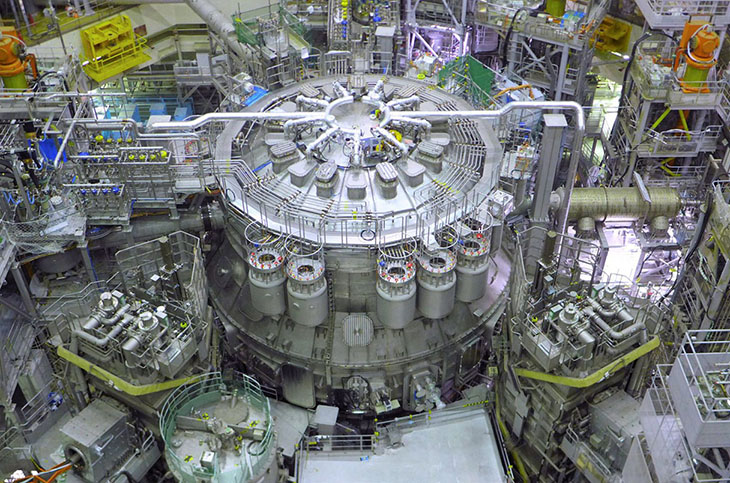
Over the recent weekend, a groundbreaking achievement unfolded in Japan as the JT-60SA, the largest operational nuclear fusion reactor on Earth, initiated its first plasma production. This tokamak-style fusion reactor employs superconducting magnets to elevate and confine a gas to an astounding temperature of 200 million Celsius, transforming it into a state of matter known as plasma.
Nuclear fusion stands as the highly sought-after Holy Grail of renewable energy, representing a promising solution to Earth’s ever-growing energy demands and heralding what some consider the ultimate revolution in the field. The fusion process emulates the Sun’s energy production without emitting harmful emissions or radiation.
Originating in 1958 in the Soviet Union, the tokamak, derived from the Russian acronym “toroidal chamber with magnetic coils,” manifests as a torus-shaped reactor comprised of magnetic coils that generate the necessary pressure to contain the plasma within. Introducing heavy hydrogen isotopes tritium and deuterium into the chamber initiates a fusion of their nuclei, generating energy through a process distinct from nuclear fission, where an atom is split.
Impressively measuring 13.7 meters in diameter and 15.4 meters in height, the JT-60SA resulted from collaborative efforts involving over 70 contracted companies and the collaborative work of 500 scientists and engineers from Europe and Japan. Its construction commenced in 2007 as part of an agreement between the European Union and Japan, aiming to develop the JT-60SA as a scaled-down precursor to the larger fusion reactor ITER, currently under assembly in France.
Kadri Simson, the European Union’s energy commissioner, lauded the JT-60SA as “the most advanced tokamak in the world” and characterized the commencement of operations as a significant milestone in the history of fusion technology.
“Fusion has the potential to become a key component for energy mix in the second half of this century,” Simson also said.
Governments and a handful of private enterprises worldwide have been grappling with the formidable challenge of advancing nuclear fusion technology beyond the threshold where it consistently produces more energy than it consumes. While this milestone was briefly achieved at the Lawrence Livermore National Laboratory in the United States, sustaining such a feat has proven elusive.
Various private firms are pursuing diverse approaches to harnessing energy from plasma, reflecting the diversity of ideas within the industry. Despite significant strides, the overall progress of nuclear fusion technology is still in its early stages, necessitating further developments and breakthroughs.
The JT-60SA is poised to contribute valuable data that could enhance the understanding of plasma dynamics, aiding in the refinement of construction and operational aspects of the International Thermonuclear Experimental Reactor (ITER). The success of this endeavor hinges on its ability to come online by the initially projected date of operation in 2025.
What are your thoughts? Please comment below and share this news!
True Activist / Report a typo


